Federico García Lorca and "El Duende"

Flamenco transcends music and dance, becoming an art form that channels the most intense and profound human emotions. At the heart of this cultural expression lies the "flamenco duende," a concept as mysterious as it is powerful. The "duende" cannot be described in words, but it can be felt. It’s the emotion that shakes your soul when you hear a deep lament, the moment when a dancer’s movements evoke stories without needing words.
In places like El Duende by Tablao Cordobes, this magic comes alive every night, making flamenco shows in Barcelona an unrepeatable experience.
What is “Duende” in flamenco: the spark that makes it unique
Defining what duende is feels like trying to catch the wind with your hands: you know it’s there, you feel it, but you can neither possess nor touch it. Duende is an emotional force, a connection between the artist and the audience that transcends technique and talent. It’s that essence that makes our tablao flamenco in Barcelona not just a show, but an immersive experience that awakens all your senses.
The term "duende" has its roots in Andalusian tradition, where it is used to describe that intangible spark separating the ordinary from the extraordinary. In flamenco, duende arises when an artist’s passion reaches such heights that it seems to break the boundaries of the human. But it’s not guaranteed: duende is capricious, that “magic” appears when you least expect it and only in moments of utmost surrender.
Federico García Lorca and his vision of flamenco's Duende
In his essay "Theory and Play of the Duende", Lorca offers a poetic and philosophical vision that perfectly aligns with the concepts defined throughout flamenco history. For him, duende is not simply inspiration; it is struggle, a battle between the artist and their internal limits. It is not found in technical perfection or virtuosity, but in the ability to convey an emotional truth that cannot be faked.
Federico García Lorca describes duende as something that "rises from the soles of the feet" and needs a "living body" to manifest. In the best tablaos in Barcelona, like El Duende by Tablao Cordobes, this idea becomes real when artists achieve that almost supernatural connection with the audience. Every note, every step, every tap of the heel opens a door to an emotional dimension that surpasses words.

